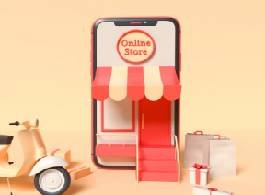Facebook has been the most growth-providing platform for most brands and organizations for many years now. Marketers predict that more than half of the global population uses mobile phones to access Facebook at least once a month. This makes the Facebook platform lead the pack in social media advertising. Organizations see it as providing more value to the client and allocate a larger piece of their digital marketing plan for it. The following things will help you to understand everything about new Lead Ads for your particular business and explore new opportunities.
What are Facebook Lead Ads?
Any form filling on mobile devices has always been a major pain point for all users. It has deterred lead generators and advertisers to not run their Facebook Ads. The Facebook Lead Ads however allays this pain point with its new format. It is a native, mobile-friendly, and user-friendly way to gather customized user data through an auto-fill functionality. The form is served to the target audience in an ad format. When someone clicks on the Lead Ad, the form opens up with the information required for the form automatically populated.
Strategies to implement
The biggest advantage of using Lead Ads is that it allows one to use the ad format for eCommerce as well as to generate lead accounts. This can be done with its unique customization option present in the form creation process. One may collect the data from their users who are interested in the service or product. They can be offered various kinds of discount coupons or introduced to loyalty programs. Customers may also pre-order the product, download a free eBook, or sign up for the blog and newsletter to know the company and product better.
How to get started?
The easiest way is to start is by creating your Facebook Ad Manager account. This will further allow one to simply set up the rest of the Lead Ads preferences with a few clicks. One shall need to ensure that they have admin access to the Ad Manager and the Page. One shall also need to be an admin to access the CSV files and link the Lead Ads to the CRM tool. One should also read the advertiser’s privacy policy and other information beforehand. The best forms are the ones that have the fewest questions and use images, videos, or creative language.
How to set the Lead Ads?
- The first step is to create a campaign and give it a suitable name. Then one should select Lead Generation under the Objective tab, and click create to set it up further. Similarly, one can create an Ad Set by giving it a name and setting the ad set level, selecting the page, budget, audience, schedule, optimization, placement, pricing, delivery, and more. The next step is where one needs to create a new advertisement and give it a name. Then select the Facebook page or creative and track it.
- Now under Lead Generation, one should click the Create New Form, give is a name, select the language, and click Next. The language chosen here defines the language of the form in which the audience shall view it. The next step is to access the “What information would you like to ask for?” button to see the options. The email address and name are checked by default while there is a lot of other information that one can ask for. One can even add three custom questions here and finish the form by clicking next.
- The final step is to add the privacy policy link and any further disclaimers as required before clicking on the Add Destination button. This allows one to provide the website URL of the company, product, or service that is being advertised. It helps the customers to visit the site once they have completed the form. The Preview Form button allows you to see the final form before publishing it. The last thing is to click the Create Form button and click Upload Changes to the top right of the Power Editor to publish the form.
Conclusion
One should keep in mind that Facebook recommends the use of a variety of video ads and other incentives like discounts, offers, and more to engage your potential and present user base. These incentives it provides make the user feel comfortable about sharing their personal information more freely. It also engages them further to interact with the ad and eventually make a purchase.

